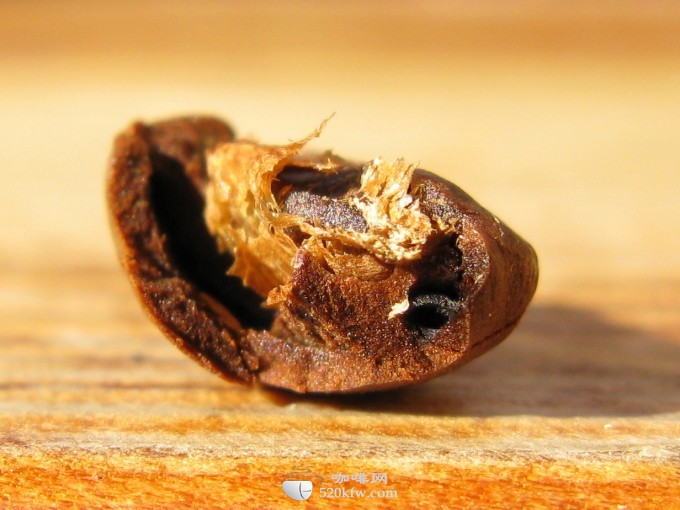Analysis of Coffee roasting steps

Once the coffee seed is planted, no one can change its final quality. However, the color, aroma, bioactive components and health characteristics of coffee are related to the roasting process. In the process of roasting, coffee is heated at 190-220 °for 7-20 minutes, which helps to bake out its aroma and good taste. It also helps to form lactone, nicotinic acid, coffee tannic acid with antioxidant effect, caffeine and other health-beneficial compounds and trace elements.
Caffeine is the only substance that remains unchanged throughout the baking process, but huge, complex and not yet fully understood chemical changes in coffee beans cause about 25% of their weight loss. During the baking process, the color of coffee beans changes from green to yellow, then to brown, and finally to brown. The process from yellow to brown is often referred to as the first burst, because a popcorn-like popcorn popping sound occurs at about 160 degrees, when the coffee beans more than double in size, turn light brown, and lose about 5% of their weight. The coffee bean expands to 150% of its original volume, and caramelization begins inside the bean.
Next, the temperature rises from 205 °to about 220 °, the color of the coffee changes from light brown to medium brown, and there is about 15% weightlessness. This chemical process is called high-temperature decomposition, in which the chemical composition of coffee beans changes and releases carbon dioxide. After the first burst, there is a pause, followed by a brief endothermic process, followed by a chemical reaction, followed by an exothermic process known as the second burst. The second high temperature decomposition occurs at 225 °and the color changes to a moderate black-brown color.
The second burst is faster, and the coffee beans show an oily luster and become fragile, and at this stage, its ingredients begin to carbonize, resulting in charred properties. The smell of coffee can be smelled before the first burst. The first burst reflects the physical stretch of coffee and the chemical reactions of the compounds associated with it, such as the formation of water and the release of carbon dioxide. When the temperature reaches its peak, a second burst occurs, when the cellulose, matrix and coffee beans all begin to break.
The darker the robusta beans are baked, the more delicious they are; the darker the Arabica beans are baked, the more delicious and special they lose. On the other hand, medium baking can make their delicacies well displayed.
The automatic sorting machine separates high-quality coffee beans from many coffee beans, removes beans that are too light or too black, and applies very sophisticated production control techniques to reduce the percentage of unqualified coffee beans, including: ultraviolet fluorescence analyzer, identify moldy beans; trichromatic light mapping technology produces color fingerprints (yellow-green, red and infrared) for each coffee bean.
Soluble coffee needs vacuum packaging because it has strong water absorption. In roasted coffee, soluble coffee does not contain a lot of volatile substances, and most soluble coffee is made from robusta coffee. Robusta coffee is cheaper and contains more caffeine than Arabica coffee.
Important Notice :
前街咖啡 FrontStreet Coffee has moved to new addredd:
FrontStreet Coffee Address: 315,Donghua East Road,GuangZhou
Tel:020 38364473
- Prev

Basic chemical reactions that occur during coffee roasting
Many thermal and chemical reactions take place during baking: decarbonation, dehydration of quinic acid, fragmentation, isomerization, polymerization, and complex sugar reactions (caramelization). The main thermally reactive components are monosaccharides and sucrose, chlorogenic acid, displaced amino acids, and trigonelline amide. Both aravinone and calactose in polysaccharides are transferred, and basic sulfurization contains hydroxyamino acids.
- Next

Fine Coffee Roasting--Hawaiian Coffee
The Hawaiian Islands lie south of the Tropic of Cancer, straddling the 19th to 22nd parallel, and are blessed with coffee growing areas. Hawaii is the 50th state in the United States, 2,400 miles west of the continental United States, and the only state in the United States that produces coffee. Hawaiian coffee is internationally known as one of the best coffee in the world.
Related
- What is the meaning of lactic acid fermentation with coffee bean treatment?
- How to judge the state of foam by sound?
- How does the latte pull out the unicorn pattern? Come to get for a little trick to improve the flower pull!
- Will flower pulling affect the taste of the latte?
- Do you know the history of coffee?
- The difference between honey treatment and sun washing what is raisin honey treatment?
- What kind of milk can a novice use to make coffee foam to keep the foam longer? The correct method and skills of milking tutorial sharing
- Why do washed coffee beans taste sour? Flavor characteristics of washed Coffee
- Introduction to the skill of how to practice the size and height of water injection around the circle of hand-brewed coffee
- How do beginners practice coffee flower drawing from scratch?

